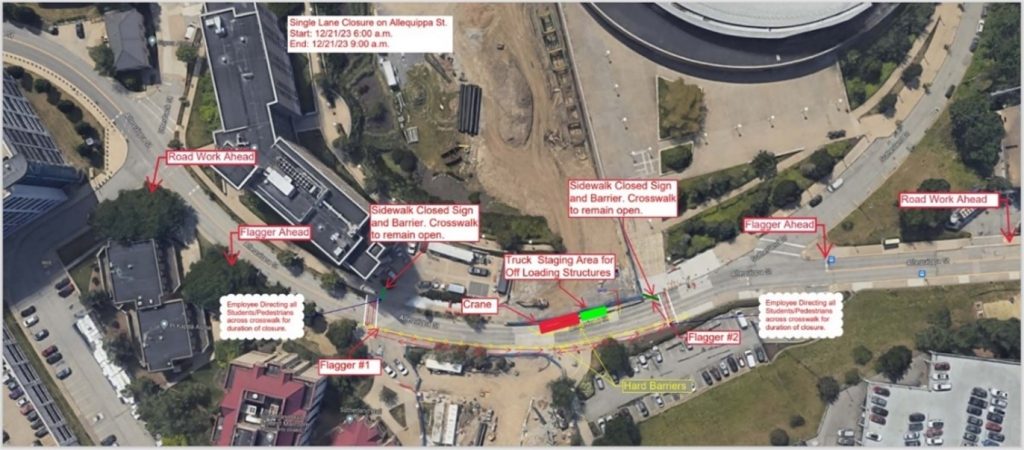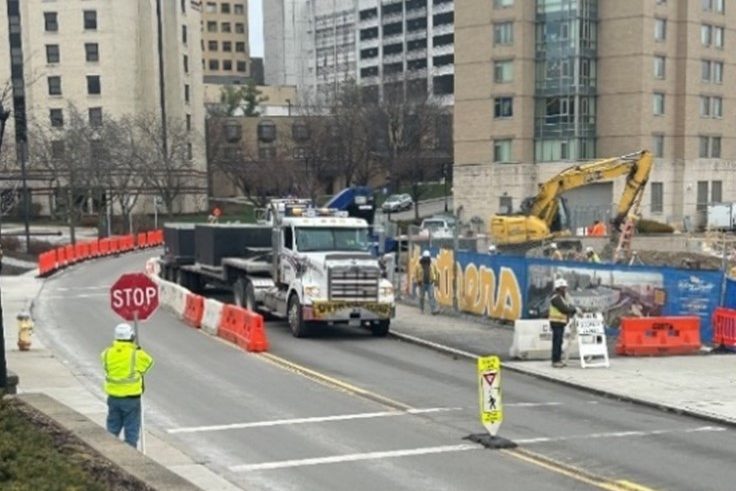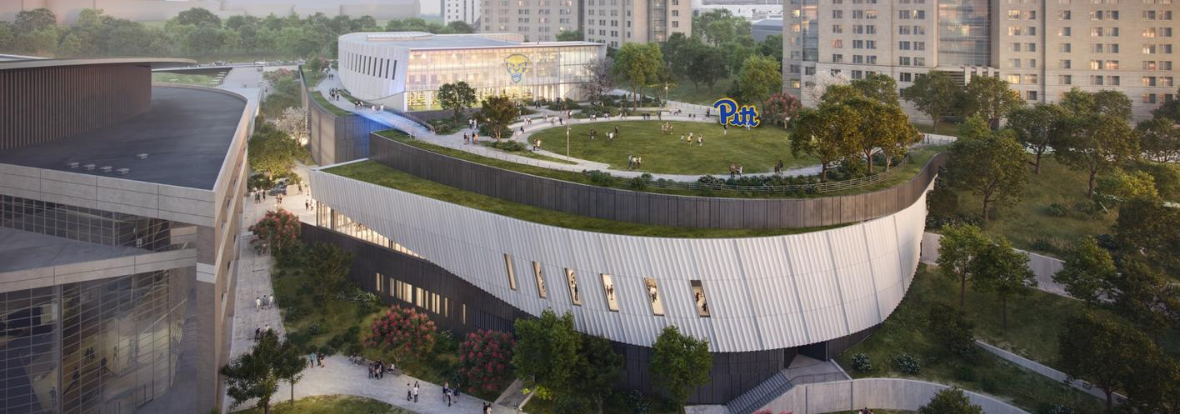For over 154 years, Gilbane has been driven by our commitment to providing a safe work environment for our project teams, partners, and communities. This commitment is reinforced through several key safety practices for construction sites that include continual education and required training leveraging innovative processes and advanced technology. Our leaders actively participate in national and local safety committees, helping to shape construction industry best practices. We also undergo third-party reviews from organizations such as Associated General Contractors, Construction Users Roundtable, and the Associated Builders and Contractors, whose validation ensures we stay ahead of the latest safety trends.
Proven Safety Processes on Active Higher Education Construction Job Sites

The University of Pittsburgh Arena & Sports Performance Center (UPASPC) project includes the new construction of a state-of-the-art arena on an active university campus. It requires careful planning to ensure the safety of staff and other university employees, students, construction workers, and campus visitors. The project is surrounded by three student dorm buildings – the Petersen Events Center, the UPMC Presbyterian Hospital, and the Student Recreational Center. The Student Recreational Center is an active construction site that shares access points with the UPASPC project, adding another layer of complexity to the project location. The UPASPC project is bordered by two of the city’s main roads. At Gilbane, we have developed several critical aspects of a project-specific safety plan for sites on active campuses. Three focus areas of the plan include planning, communication with project stakeholders, and adapting the plan to changing needs.
1. Safety Planning on an Active Campus Job Site
Meticulous planning is one of the first steps of any successful project, especially on an active higher education campus. At the UPASAC project, team members from Gilbane |Massaro and The University of Pittsburgh met early on to discuss a site-specific safety plan, which was tailored to the unique characteristics and requirements of the project site to ensure safety was a top priority throughout construction. Key components included:
- Utilizing barricades and fencing to partition off active construction work from the surrounding campus environment.
- Replacing standard fences with post-driven fences offers excellent stability, reducing the risk of accidents caused by fence collapse or displacement.
- Utilizing locks on every gate ensures that only trained personnel can enter the job site, maintaining a controlled and safe environment at all times.
- Implementing an online safety orientation program, Go Contractor, to review non-negotiable worker safety rules and procedures with all personnel.
- Implementing daily safety briefings to communicate important information such as access points, muster points, AED locations, and construction site access protocols.
- Gathering Maintenance and Protection of Traffic (MPT) Plans from trade coordinators, which provided detailed guidelines on how to maintain and protect traffic flow, minimizing disruption to the surrounding community.

2. Effective Communication with Key Project Stakeholders

Clear and effective communication is crucial to ensure project site personnel and those in the surrounding area are informed about ongoing construction activities. The UPASPC team actively collaborates with the University of Pittsburgh to communicate road closure schedules to students residing in affected buildings. By promptly delivering accurate information, they can successfully minimize inconveniences and any negative impacts to students, staff, and visitors.
Physical barriers and flaggers are also a significant form of communication, serving as a visual reminder of the ongoing construction work. Physical barriers, such as fencing, concrete barricades, or temporary walls, prevent accidental entry into hazardous areas and provide protection to crew members and the public. Signage attached to these barriers communicates information such as road closures, detours, or restricted access, helping pedestrians and drivers make safe, informed decisions about appropriate routes. Flaggers stand at strategic points that allow them to direct traffic flow. Their presence is especially crucial to prevent accidents, reduce congestion, and keep the construction site organized.
3. Adaptability of the Construction Site Saftey Plan
Adaptability and proactive responsiveness play a pivotal role in ensuring the success of the project’s safety plan. Gilbane holds daily huddle meetings with site supervision to discuss student and worker safety, schedule, and any updates or changes that might occur during the day. These meetings allow for real-time adjustments and ensure all team members are on the same page. Weekly owner, architect, and contractor meetings (OAC) meetings will enable the team to communicate and mitigate any new impacts, recent safety trends on-site, and potential safety issues or potential hazards. These meetings provide a platform for open dialogue and collaboration, ensuring that all parties are informed and any concerns are addressed promptly.
The health and safety of students, staff, and workers continue to be the number one priority for Gilbane on any active job site, and the UPASPC project site is no exception. Through meticulous planning, effective communication, and the flexibility to make changes, Gilbane safeguards students, faculty, and workers on campus.



